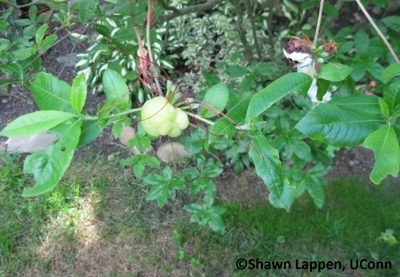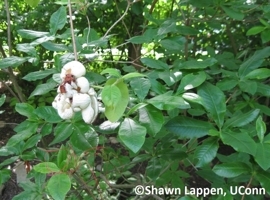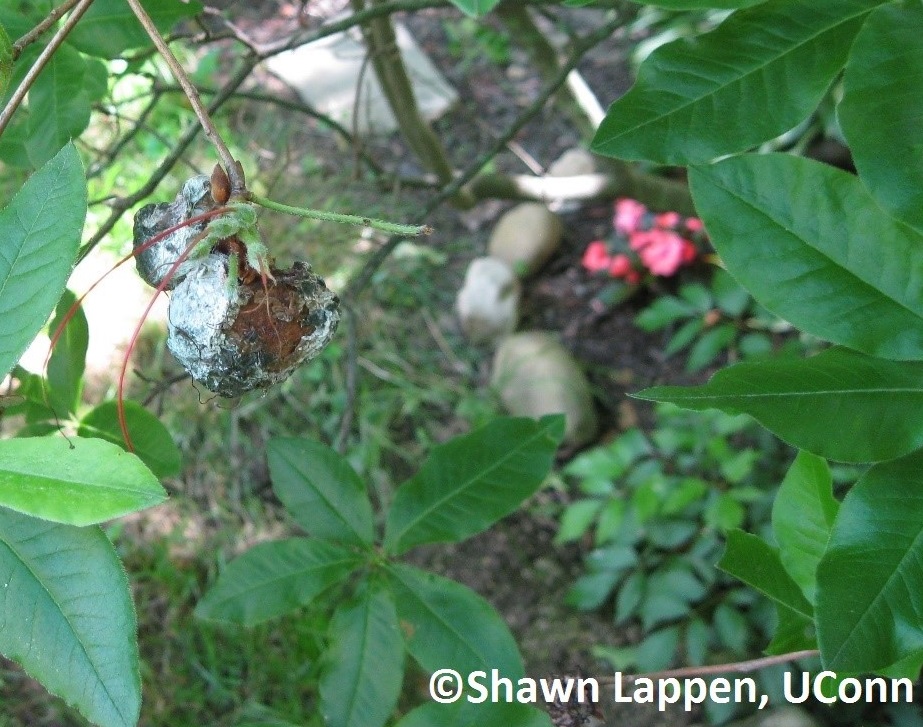Exobasidium vaccinii
Exobasidium vaccinii is a common fungal disease that produces galls on members of the Ericaceae family and affects a variety of host plants in a number of different ways. The unsightly, bulging masses can be found on many parts of the plant including the branch tips, leaves, flower parts, and seed pods.
Hosts
Azalea gall host plants include azalea, rhododendron, bearberry, blueberry, cassiope, cranberry, farkleberry, gaultheria, huckleberry, kalmia, leatherleaf, leucothoe, madrone, manzanita, bog rosemary, box sandmyrtle, and Labrador tea.

Symptoms
Symptoms of E. vaccinii start in the spring as spores are produced and pale green, pink, white, or brown fleshy galls develop on leaves causing them to thicken and curl. In the late spring and early summer, the swollen plant tissue starts to form a white spore layer. Later in the season the galls will turn brown and hard and may drop to the ground. Lower leaves tend to be the most infected due to poor air circulation.
On cranberry the disease shows as red, swollen spots on the fruit and leaves and infected stems will become thickened.
Disease Cycle
The fungus overwinters as spores in old galls and flower bud scales on the host plant. The disease advances on the new leaves and plant tissues of azalea as spores are produced during cool, wet weather. Spores produced in the spring and summer are dispersed by wind, splashing water, insects and during times of high humidity. Spores can remain viable until advantageous conditions are present. The symptomatic galls do not appear until the following year in the spring.

Galls covered with white spores

Late-stage galls
Control
The management practice for this disease is to hand pick the galls or prune out localized infections before they begin to spore and turn white. Fungicides applied in the spring may help to manage this disease as a preventative treatment. Other disease preventions include watering the root structure and not the leaves, making sure that the soil is well aerated, and making sure that the plant has good air flow throughout, and gets the proper amount of sunlight. Good sanitation includes removing any plant debris each fall.
Most native and horticultural azalea and rhododendron plants are susceptible to Azalea gall. Rhododendron maxium., R. catawbiense Michx, and their hybrids, are listed as being particularly susceptible, as are the Indica azalea group. Resistant cultivars of azalea include Formosa, Sensation, and Aphrodite.
For pesticide information or other questions please call toll free: 877-486-6271.
UConn Home and Garden Education Center, 2019.